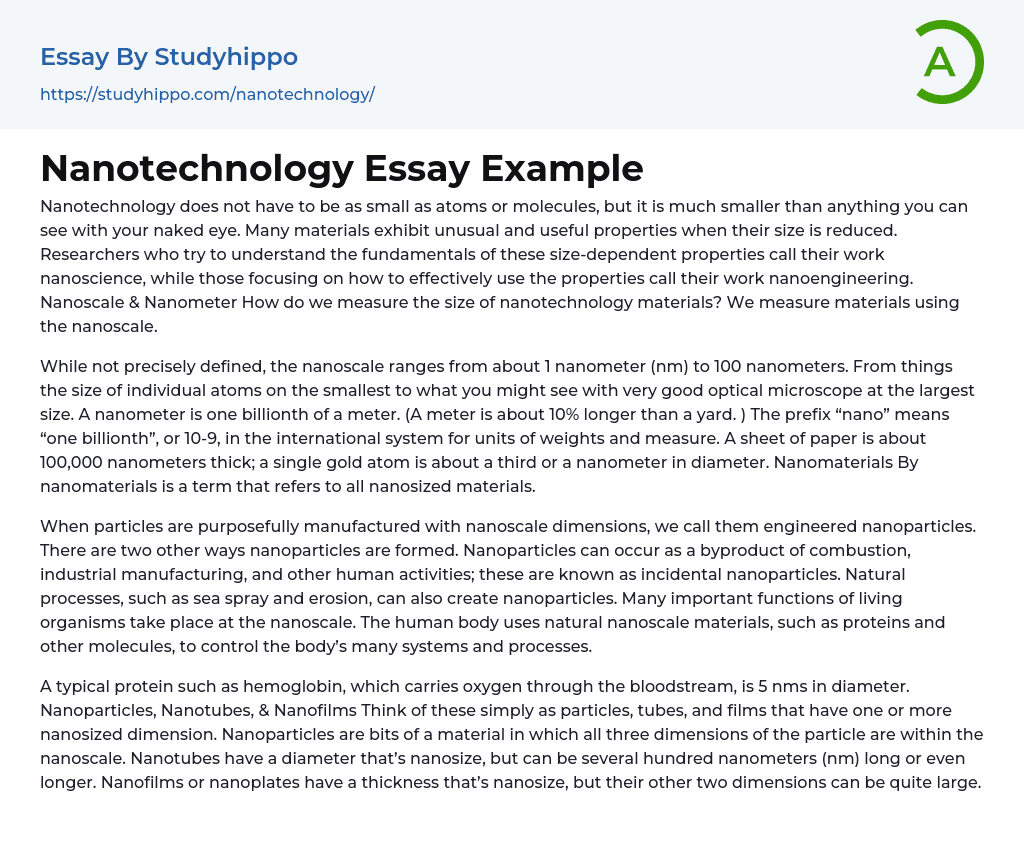Nanotechnology encompasses the manipulation and study of materials on a microscopic scale that cannot be seen without the aid of magnification. The act of decreasing material size frequently results in unique and advantageous characteristics, even if atoms or molecules are not directly implicated. Researchers examining the principles underpinning these size-related properties are involved in nanoscience, while those concentrating on effectively utilizing these properties engage in nanoengineering. Measurements for nanotechnology materials employ units such as nanoscale and nanometer.
The nanoscale covers a wide range of objects, from individual atoms to those visible with a high-quality optical microscope. It spans from approximately 1 nanometer (nm) to 100 nanometers. In the international system for units of weights and measures, a nanometer is equal to one billionth of a meter or "nano" represents "one billionth" (10-9). The thickness of a sheet of paper is
...about 100,000 nanometers while a single gold atom has a diameter of roughly one-third of a nanometer. All materials within the dimensions in the nanoscale range are known as Nanomaterials.
Engineered nanoparticles and incidental nanoparticles are both particles with nanoscale dimensions. Engineered nanoparticles are intentionally produced, while incidental nanoparticles are formed as byproducts of human activities. Nanoparticles can also occur naturally through processes like sea spray and erosion. At the nanoscale level, important functions in living organisms occur. The human body uses natural nanoscale materials such as proteins and other molecules to regulate various systems and processes.
Proteins like hemoglobin have a diameter of about 5 nm and are responsible for carrying oxygen in the blood. In nanotechnology, there are particles, tubes, and films called nanoparticles, nanotubes, and nanofilms respectively. These structure
can be seen as particles, tubes, and films with at least one dimension falling within the nanoscale range. Nanoparticles refer to small fragments of a material where all three dimensions are within the nanoscale range. On the other hand, nanotubes have a nano-sized diameter but their length can vary from several hundred nanometers to longer measurements. Finally, nanofilms or nanoplates have a thickness that is nano-sized while their other two dimensions can be relatively large.
- Organic Chemistry essays
- Acid essays
- Calcium essays
- Chemical Bond essays
- Chemical Reaction essays
- Chromatography essays
- Ethanol essays
- Hydrogen essays
- Periodic Table essays
- Titration essays
- Chemical reactions essays
- Osmosis essays
- Carbohydrate essays
- Carbon essays
- Ph essays
- Diffusion essays
- Copper essays
- Salt essays
- Concentration essays
- Sodium essays
- Distillation essays
- Amylase essays
- Magnesium essays
- Acid Rain essays
- Electronics essays
- Computer Science essays
- Consumer Electronics essays
- Enterprise Technology essays
- Hardware essays
- Robot essays
- engineering essays
- people search essays
- Modern Technology essays
- Impact of Technology essays
- Cloud Computing essays
- Operating Systems essays
- Information Technology essays
- Data Analysis essays
- Information Age essays
- Smartphone essays
- Cell Phones essays
- Camera essays
- Computer essays
- Ipod essays
- Mobile Phones essays
- 3g essays
- Bluetooth essays
- Cell Phones in School essays
- Computer File essays
- Desktop Computer essays




